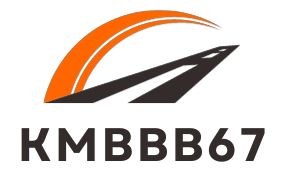How to Develop a Quote Trading Bot Using Python
Building a quote trading bot using Python can be an exciting and practical project for developers and traders looking to automate their strategies DEX for AI agents. Quote trading revolves around acting on real-time bid and ask quotes in the market, enabling traders to make quick decisions based on the most recent market data. Python, with its flexibility and robust ecosystem of libraries, makes an excellent choice for creating such bots.
Understanding the Basics of Quote Trading
Before diving into development, it’s essential to understand the core principle of quote trading. Unlike traditional strategies that rely heavily on historical data or technical indicators, quote trading uses the bid-ask spread and market depth to execute trades. The goal is to capitalize on micro movements in price, often used in scalping and high-frequency trading.
Step 1: Set Up the Development Environment
To begin, ensure Python is installed on your machine. Use version 3.8 or later for better compatibility with modern libraries. You’ll also need pip to install external packages. Set up a virtual environment to keep your dependencies organized. Some essential libraries you’ll need include requests, websocket-client, pandas, and numpy.
Step 2: Choose a Broker or API Provider
You’ll need access to real-time market quotes through an API. Several brokerages and data providers offer APIs that deliver live quotes, such as Alpaca, Interactive Brokers, or Binance for crypto. Most of these platforms require API key authentication, so ensure you register and obtain the necessary credentials. Read their documentation to understand their endpoint structure and rate limits.
Step 3: Connect to the Quote Feed
Using the API, you can connect to the live feed of bid and ask prices. If the API supports WebSockets, this is preferable over REST for real-time trading as it offers lower latency. Your bot should subscribe to quote updates for the instrument you want to trade. Each incoming message will include information like the best bid, best ask, and timestamp.
Step 4: Define Your Trading Logic
The most critical part of the bot is the trading strategy. You could implement a simple market-making strategy, where the bot places both buy and sell orders around the mid-price and profits from the spread. Alternatively, a momentum-based strategy could monitor the speed at which quotes change and act when certain thresholds are breached. Make sure to include logic to handle slippage, latency, and minimum tick sizes.
Step 5: Order Execution and Risk Management
Once your strategy identifies a trading opportunity, the bot must be able to send buy or sell orders back to the broker via API. This involves specifying the order type, quantity, and price. Always include proper error handling in case of failed requests. Integrate stop-loss and take-profit levels to control risk, and add a maximum loss cap per day to prevent runaway losses.
Step 6: Logging and Analytics
Maintain logs of all trades executed by the bot including timestamp, price, quantity, and outcome. This helps in backtesting and refining the strategy. Use pandas to store and analyze the data. Creating visualizations of trade performance over time can reveal patterns and help with optimization.
Step 7: Test in a Simulated Environment
Never deploy your bot on a live account without testing. Use paper trading environments provided by most brokers or simulate trades using recorded quote data. Run your bot in different market conditions and check for stability and profitability. Debugging in a live environment can be costly, so thorough testing is crucial.
Step 8: Deploy and Monitor
Once satisfied with the bot’s performance, deploy it on a secure server like a VPS. Set up regular monitoring alerts using tools like cron jobs or external monitoring platforms. Make sure the bot can recover from crashes or connectivity issues automatically to ensure uninterrupted performance.
Conclusion
Developing a quote trading bot in Python requires a blend of programming skills, market knowledge, and strategic thinking. While the initial setup and logic can be straightforward, fine-tuning the bot for consistent profitability involves continuous testing and optimization. With proper risk management and performance tracking, your bot can become a reliable tool for taking advantage of real-time market opportunities.
